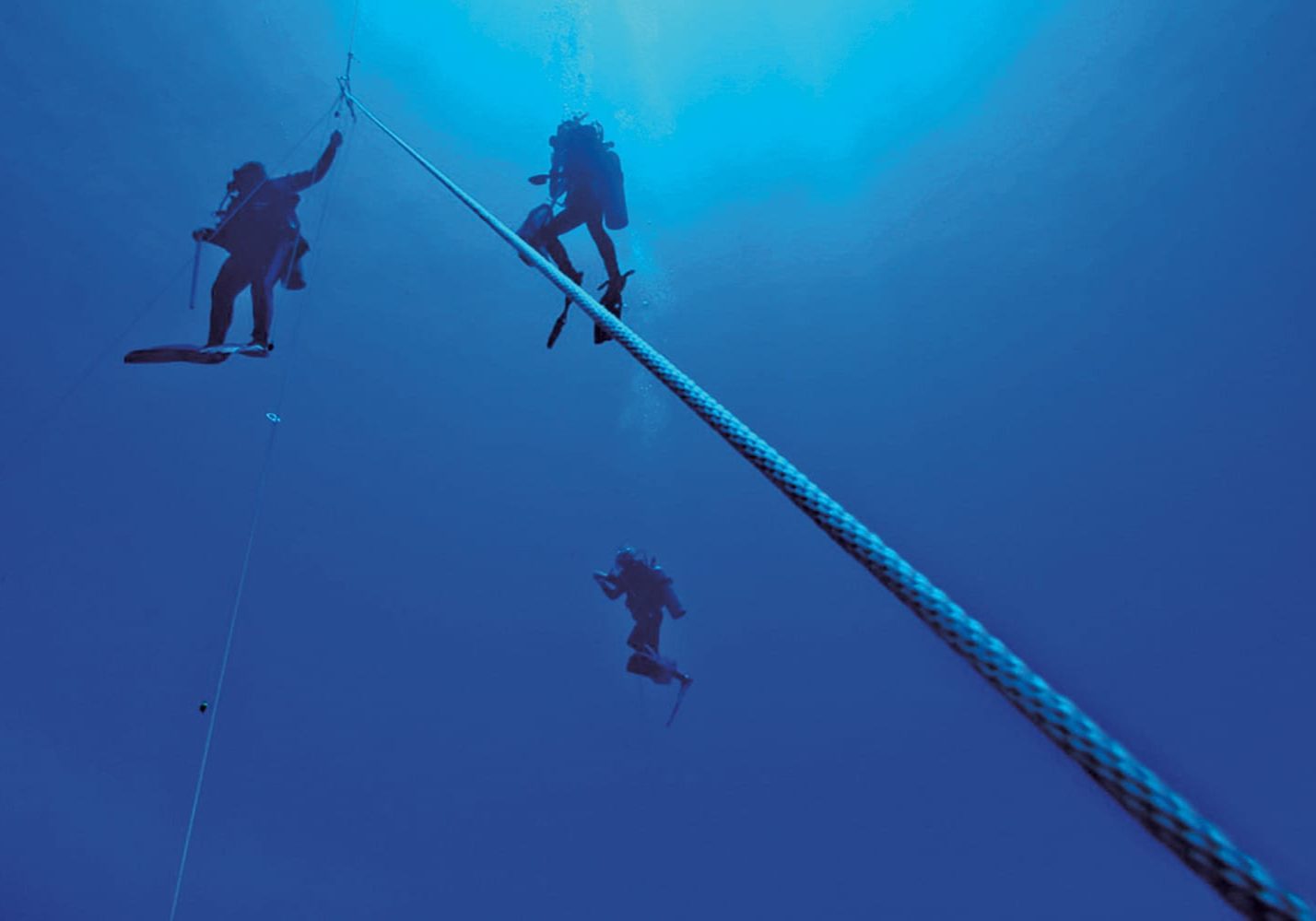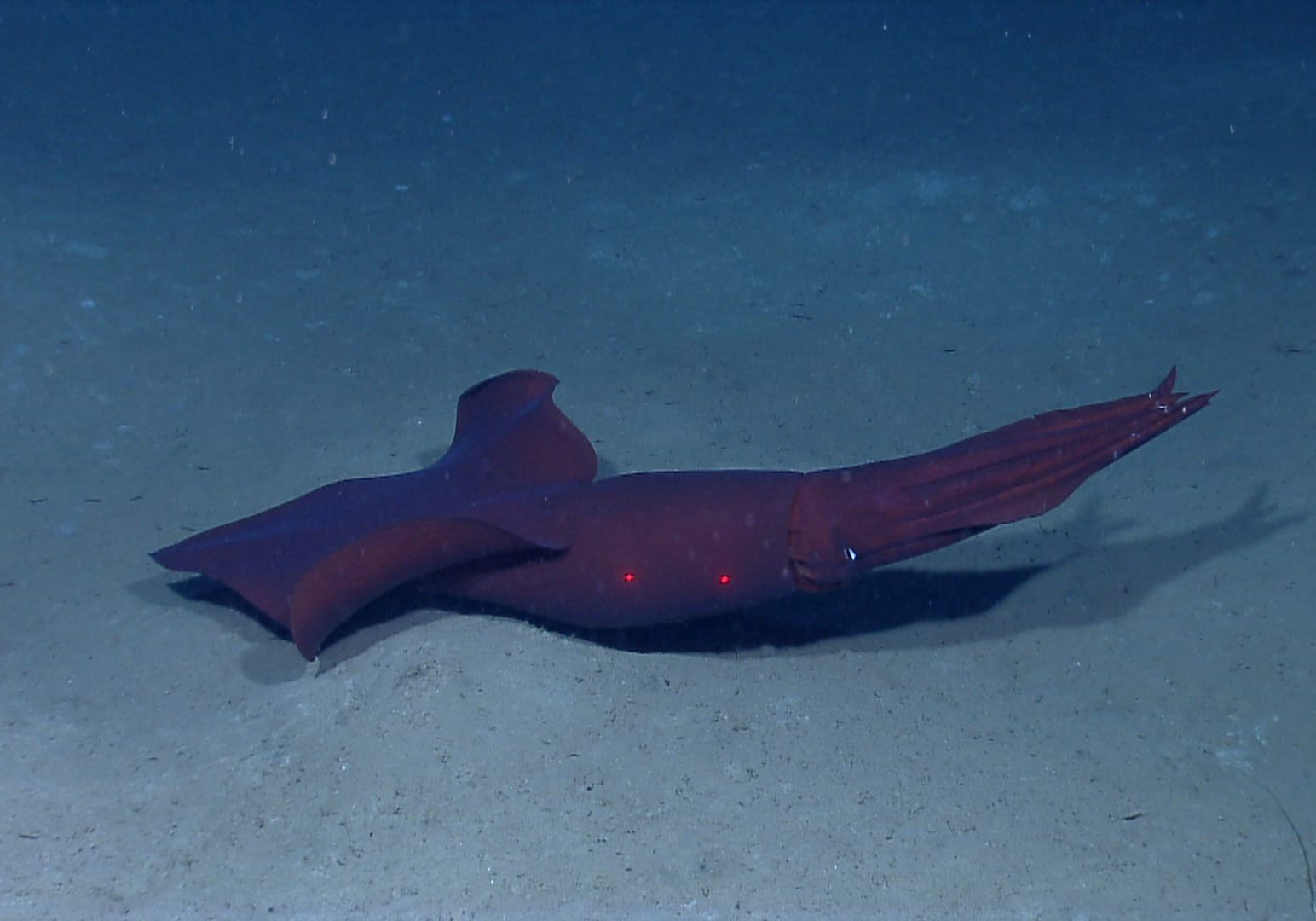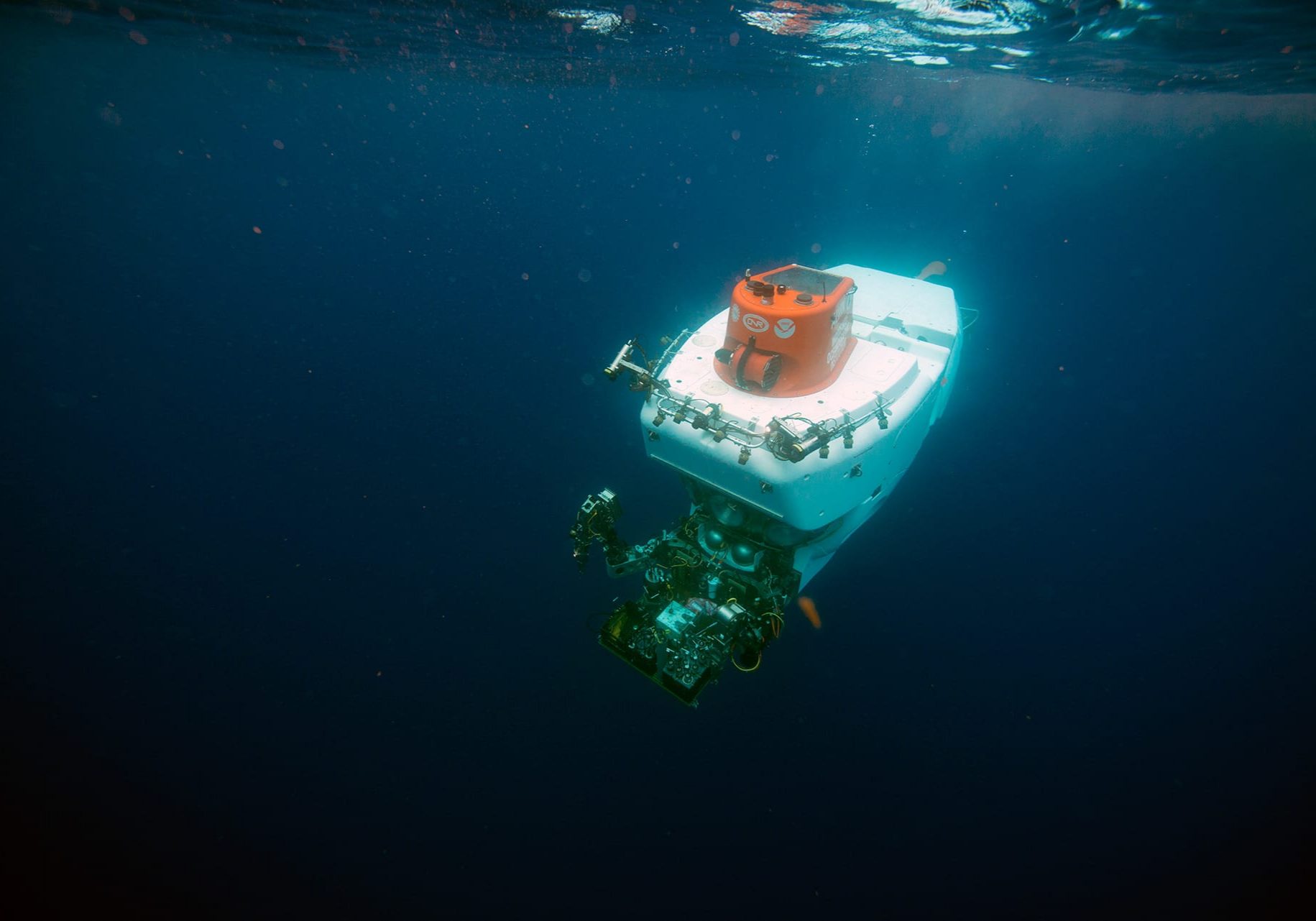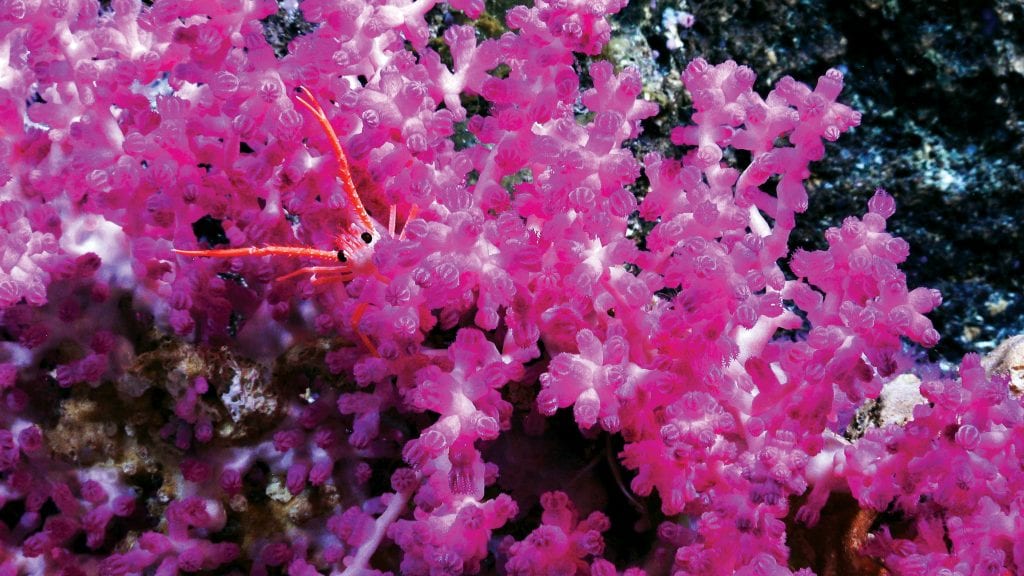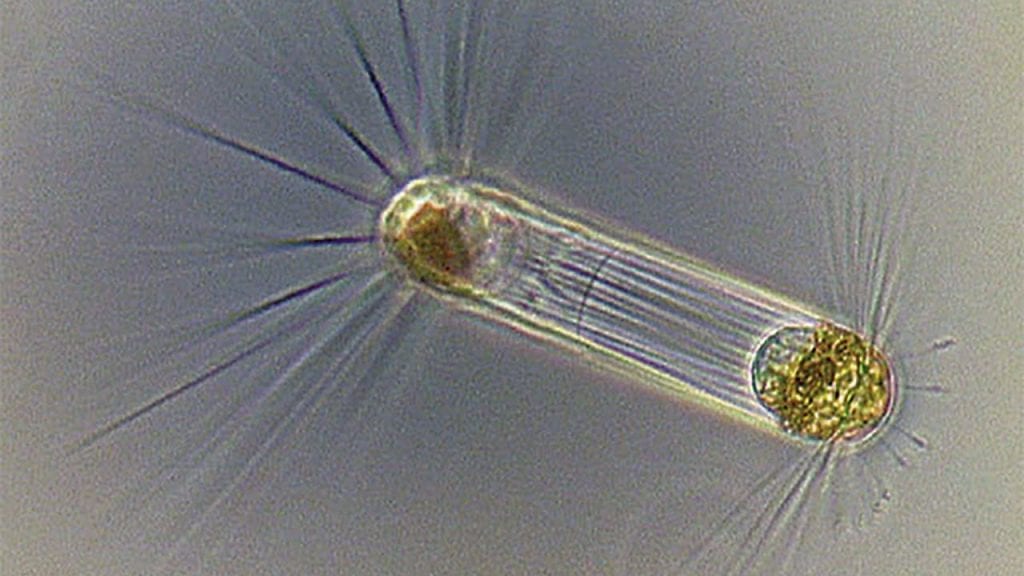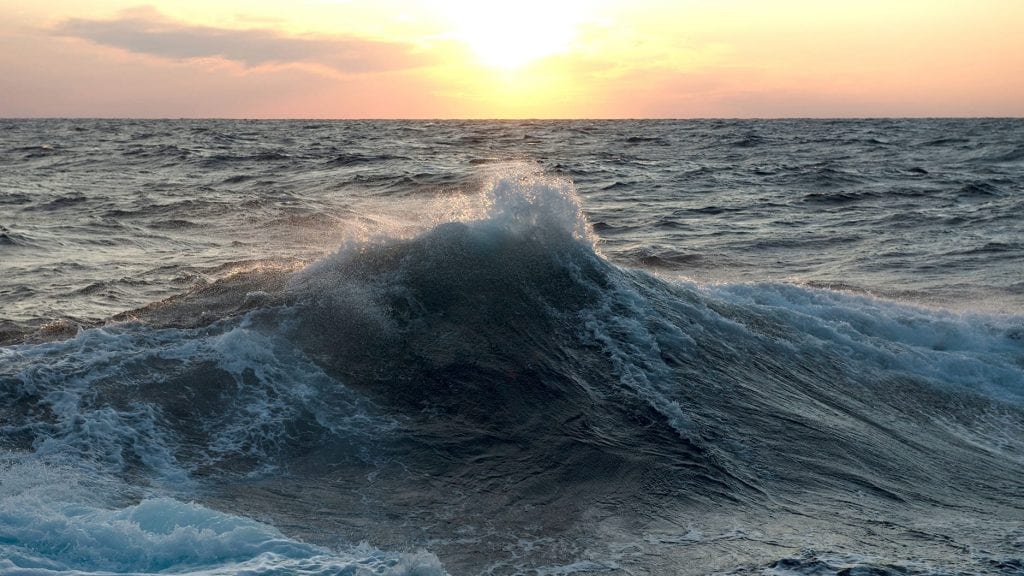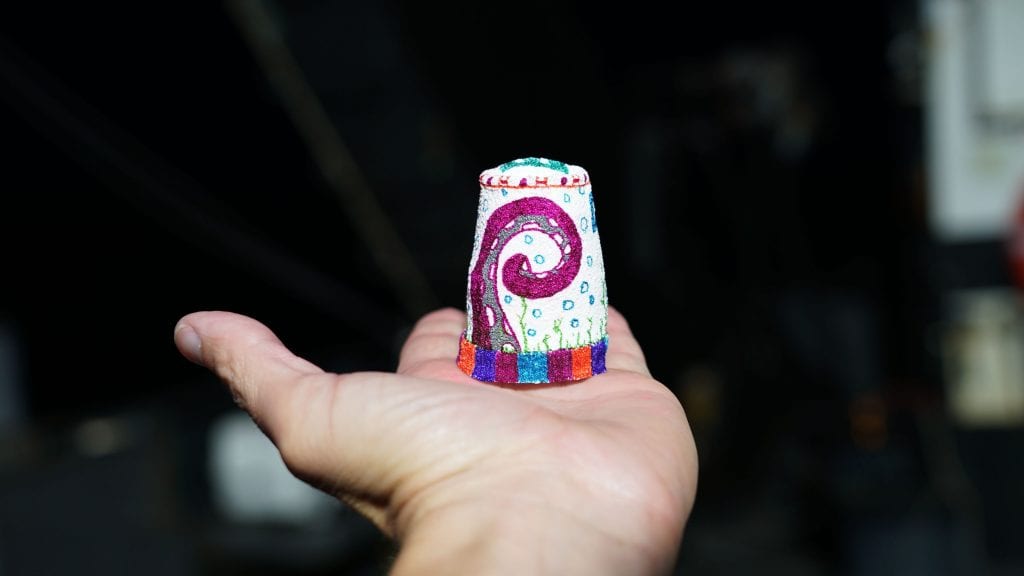Why is the ocean blue? People have wondered this for hundreds of years. One idea is that it reflects the sky. And it does—on the surface. From the coast, it may appear a deep blue on a sunny day. Or gray when it’s stormy. Or even turn a brilliant pink during sunrise or sunset. But if we sink below the surface, the blue color remains. Here, the water isn’t reflecting the sky. The blue hue is created by water itself.
Sunlight contains the full spectrum of visible colors, from red to violet and the whole rainbow in between. Different colors of light have different wavelengths. Red light has long wavelengths. Other colors have progressively shorter wavelengths, with blue and violet the shortest of all.
When light shines through water, colors with longer wavelengths are absorbed by the water, with the longest wavelengths absorbed first. As soon as we get more than a few meters underwater, most red and orange have vanished entirely. Next to go are yellow and green. Blue and violet, on the other hand, have the shortest wavelengths of visible light, so they are able to penetrate the deepest. Not only do they stick around, they’re scattered by particles in the water, making it seem as though the water itself is blue.
Other things can change the color of the water. Silt and sand may wash into the ocean from land. Or churning waves may lift them up from the sea floor. These sediments reflect more of the longer wavelengths of light, turning the water shades of brown. Water can also appear green—or red—in areas with lots of phytoplankton. These tiny plant-like algae live near the surface, turning sunlight into energy that feeds the ocean ecosystem. They contain molecules like chlorophyll that absorb some wavelengths of light and reflect others.
Shallow areas with clear water often appear turquoise. That’s because light reaches the ocean floor. It bounces off the sandy bottom, which turns the water a brilliant blue. Extremely shallow areas still have some of the green wavelengths of light. This creates the green-blue hues that we see in areas around islands and reefs, such as those in the Caribbean Sea.
Of course, as we go deeper and deeper, eventually there’s no sunlight at all. As a result, many deep-sea organisms are either black or red. This is because a red surface absorbs blue light, effectively making these animals invisible under the tiny amount of light that filters down from above. At the same time, many organisms that live in the deep ocean have evolved the ability to produce their own light. This is known as bioluminescence. Organisms use it to communicate with other animals, find mates, and hunt for food.
Braun C.L. & S.N. Smirnov. Why is Water Blue? Journal of Chemical Education. Vol, 70, August 1993. Reproduced on line at https://web.nmsu.edu/~snsm/water/.
Dickey, T.D. et al. Shedding new light on light in the ocean. Physics Today. Vol. 64, April 2011. doi: 10.1063/1.3580492.
NASA. Ocean Color. https://science.nasa.gov/earth-science/oceanography/living-ocean/ocean-color. Accessed on November 10, 2020.
NOAA. Bioluminescence. https://ocean.si.edu/ocean-life/fish/bioluminescence. Accessed December 11, 2020.
NOAA. Why is the ocean blue? https://oceanservice.noaa.gov/facts/oceanblue.html. Accessed on November 10, 2020.
Øgendal, L. Light Scattering: a brief introduction. University of Copenhagen lecture notes. https://www.nbi.dk/~ogendal/personal/lho/LS_brief_intro.pdf May 3, 2019.
Plass, G.N. et al. Color of the Ocean. Applied Optics. Vol. 17, May 1, 1978. doi: 10.1364/AO.17.001432.
DIVE INTO MORE OCEAN FACTS
Why are corals so colorful?
One of the most striking things about coral is its bright coloring. But many are a dull green or brown. So, what gives some corals their bright hues?
Does the ocean produce oxygen?
It’s easy to think of the world’s forests as the planet’s “lungs.” Trees pump out oxygen—the same stuff we breathe in. But does all our breathable air come from just land?
What causes ocean waves?
A trip to the ocean means sun, wind, and waves. Surfers ride them. Children play in them. Swimmers dive beneath them. But what causes waves?
Why is pressure different in the ocean?
As anyone who has tried diving to the bottom of a deep pool knows, all that water gets heavy—fast. Extreme pressure is one reason why the ocean floor is still largely unexplored.

